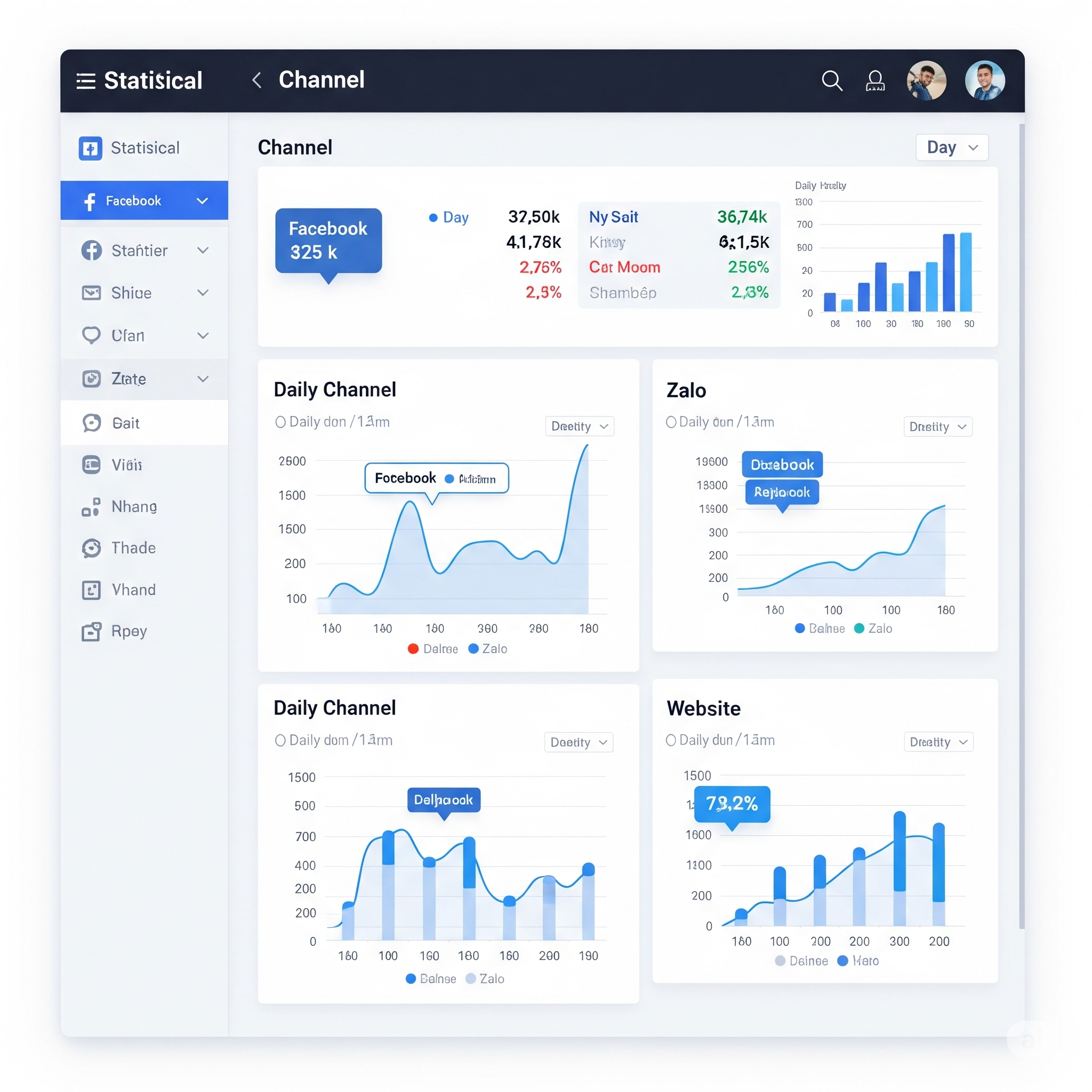Many businesses are starting to adopt AI but overlook a critical step: measuring effectiveness. Just like any other employee, AI needs KPIs, measurable criteria, and regular evaluations to ensure it performs well and delivers real value.
Without a performance measurement system, you won't know if your AI is truly supporting customers, reducing the workload for your team, or potentially creating poor customer experiences. That's why building a clear evaluation system is vital for any long-term AI strategy.
1. Key metrics to measure performance
Here are the 5 most common metrics to help you track your AI employee’s effectiveness:
- Number of conversations per day: This indicates whether your AI is actively engaged. When the conversation volume increases, compare it with the success rate to assess actual quality.
- Response accuracy rate: Does the AI understand and respond correctly to customer inquiries? A higher accuracy rate means your AI is well-trained and capable of handling diverse contexts.
- Resolution rate without human intervention: This is the “overall quality” indicator. If your AI can solve many cases independently, you’re saving significant time and human resources.
- Customer Satisfaction Score (CSAT): Are customers satisfied with the AI’s responses? You can collect this metric through short surveys after each chat session.
- Average response time (ART): Unlike human staff, AI typically replies instantly. However, if the system is overloaded or misconfigured, response time may increase unexpectedly — a red flag that needs attention.
2. Built-in measurement features in OneXBots
OneXBots is designed as an enterprise-grade platform, which means performance tracking is seamlessly integrated, easy to use, and highly visual. With OneXBots, you can:
- Xem dữ liệu theo thời gian thực: View real-time data: See exactly how many requests the AI has handled today and the average handling time per session.
- Compare performance by day/week/month: Analyze trends to understand whether the AI is improving or declining.
- Channel-based analysis: Identify which channels the AI performs best on (e.g., strong on Zalo, weaker on Facebook).

3. Regular reporting and continuous improvement
Having performance metrics is not enough — the key lies in turning data into action. This is where successful businesses often excel.
You should:
- Review weekly reports to get a comprehensive performance overview.
- Update training data based on newly emerging customer inquiries.
- Refine the tone of voice or response style if customer feedback shows dissatisfaction.
- Conduct regular test evaluations, just like internal staff assessments, to ensure the AI isn’t making errors, becoming repetitive, or generating inaccurate replies.
Related articles:
- Automating reports and internal processes with AI
- Checklist for deploying AI employees in your business
Conclusion:
AI employees are just like human employees — to be effective, they need clear goals, regular evaluations, ongoing training, and continuous improvement. With OneXBots, you not only get a powerful support tool but also a transparent, user-friendly performance measurement system that evolves with real customer feedback. Start evaluating your AI today to unlock the full potential of your "tech colleague"!







